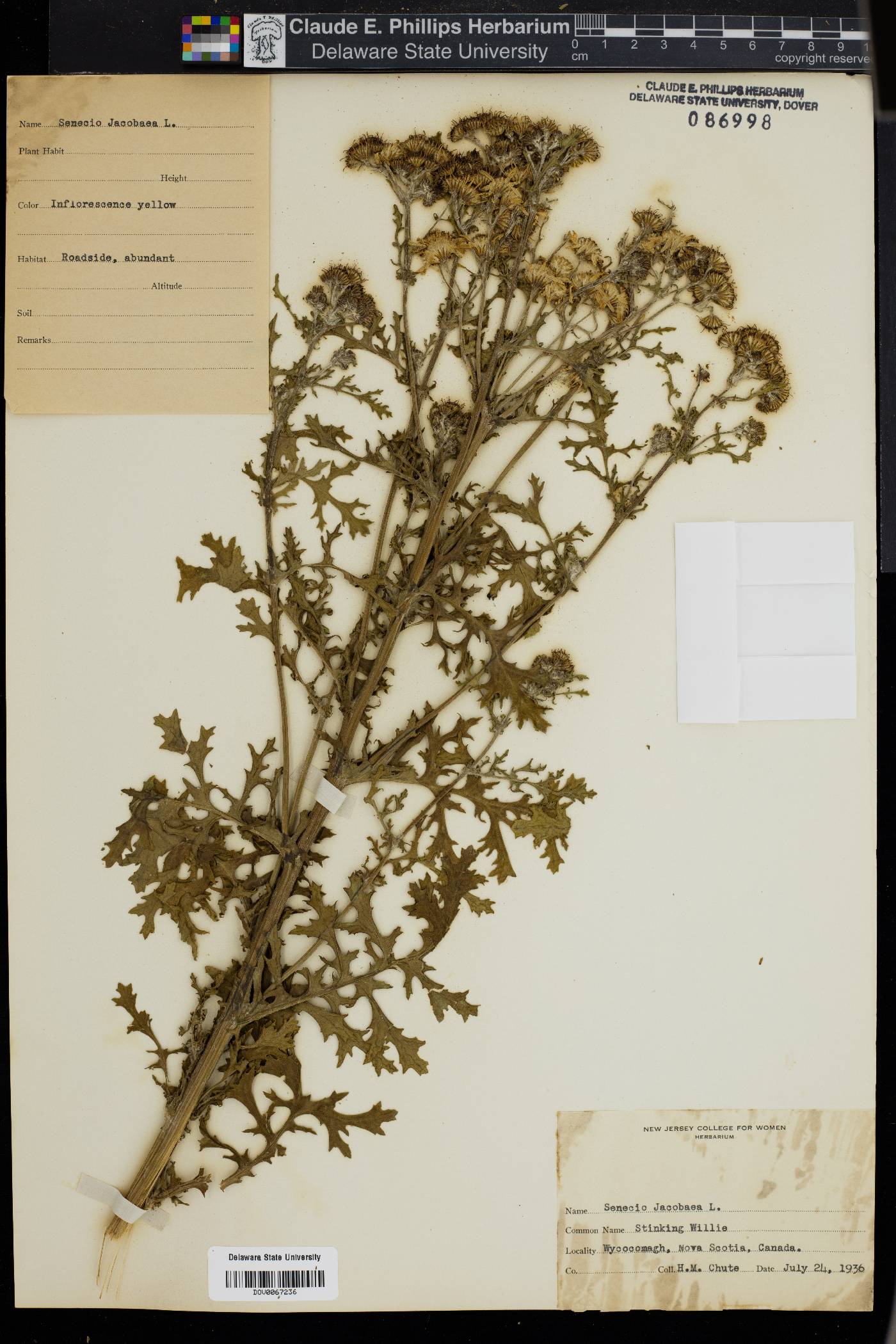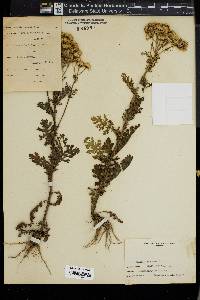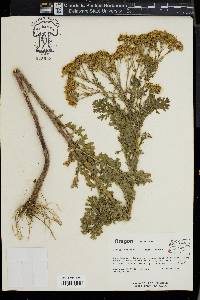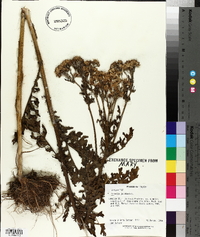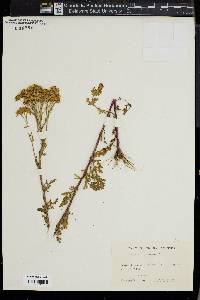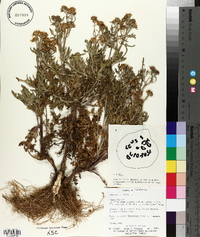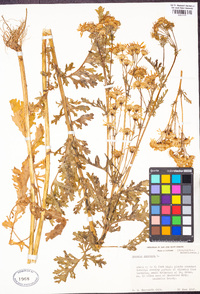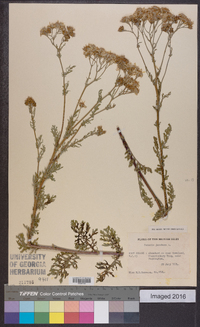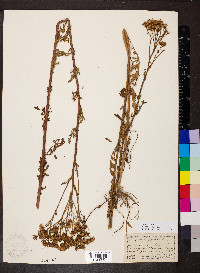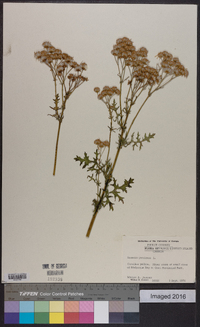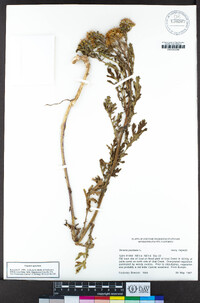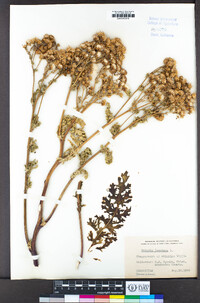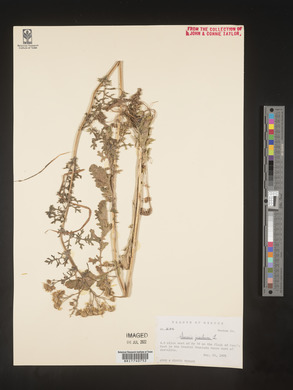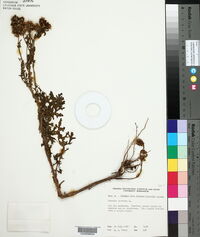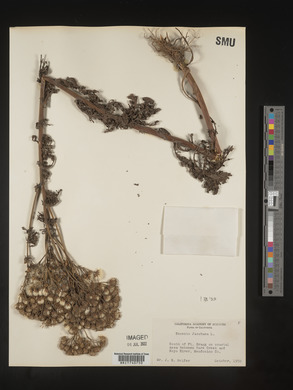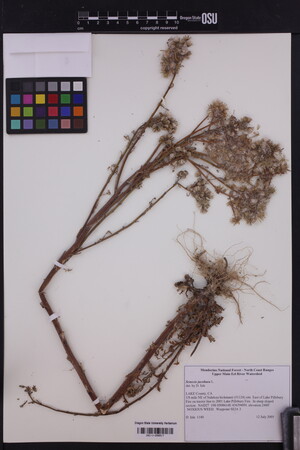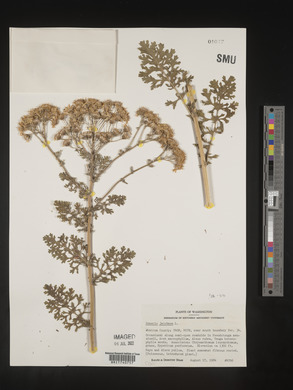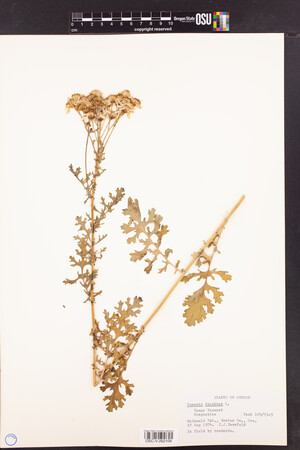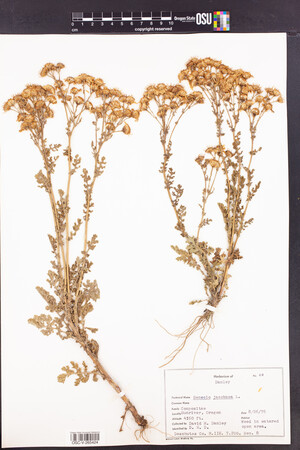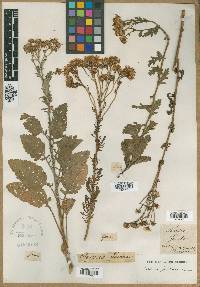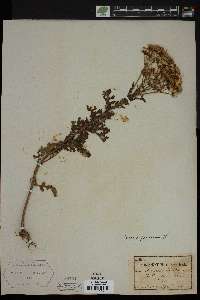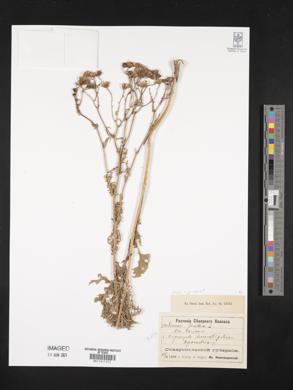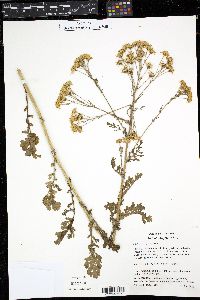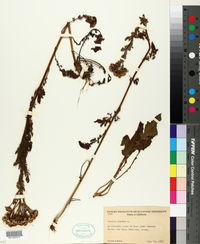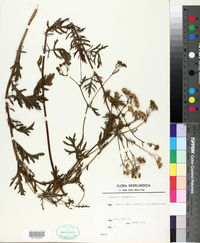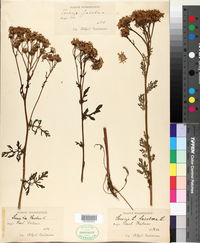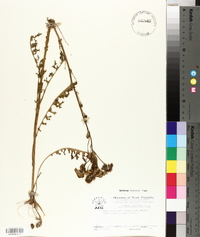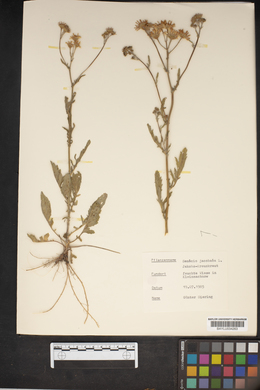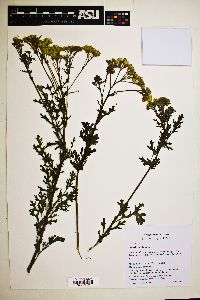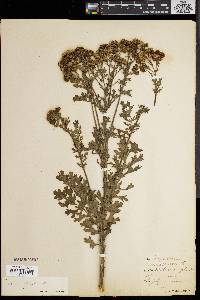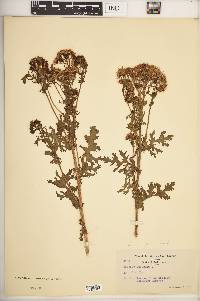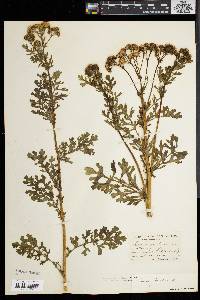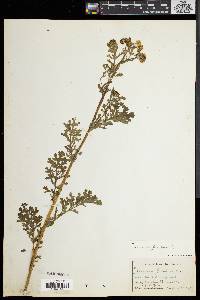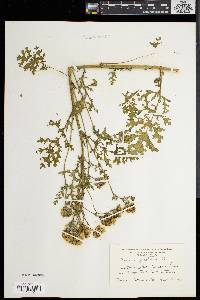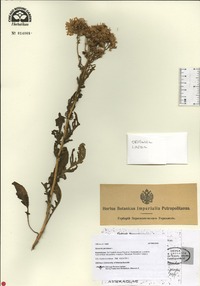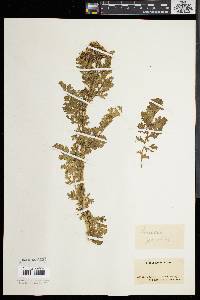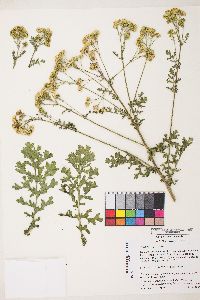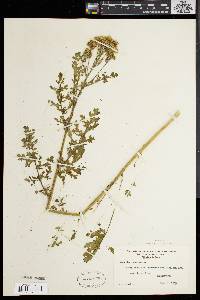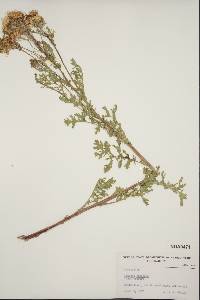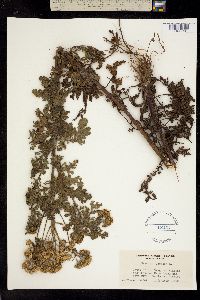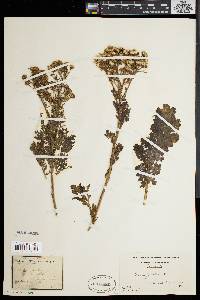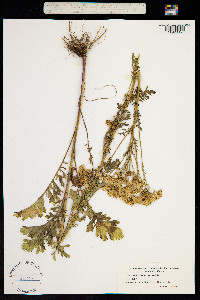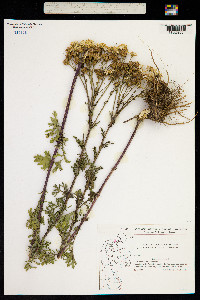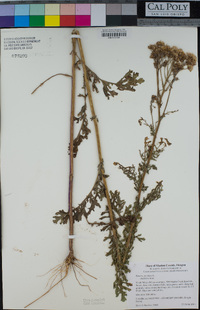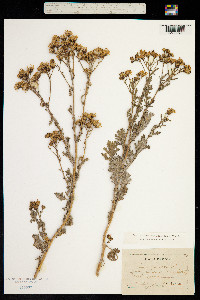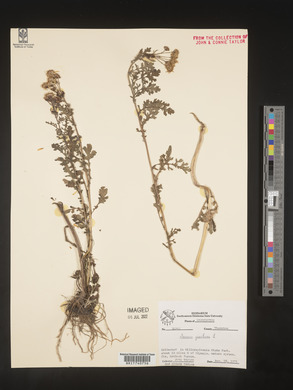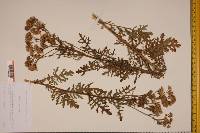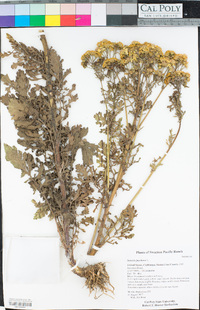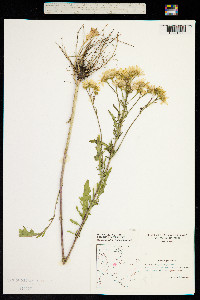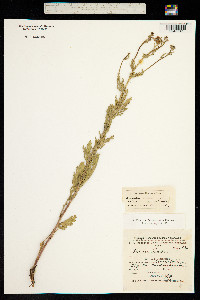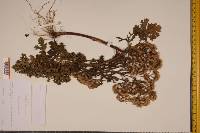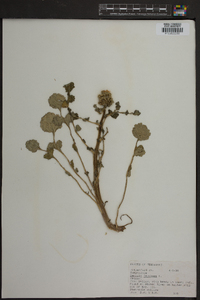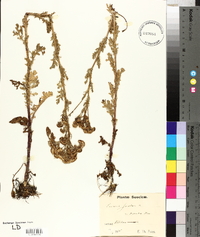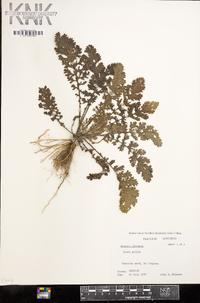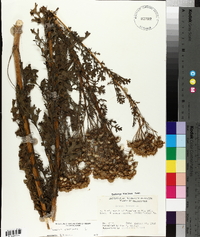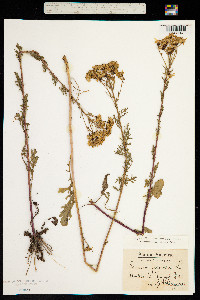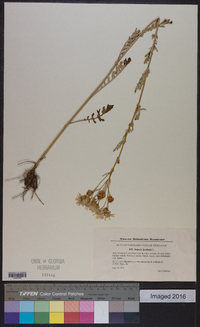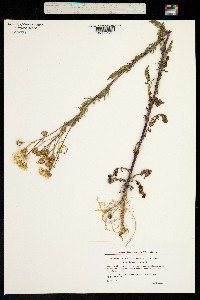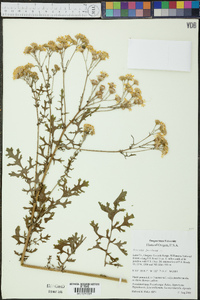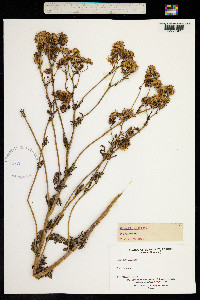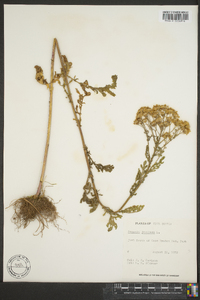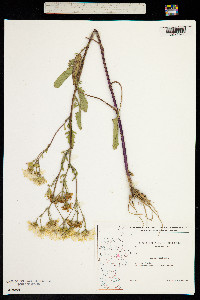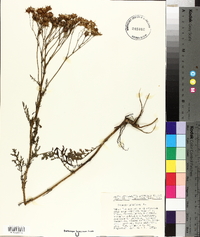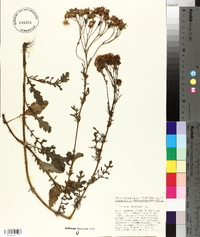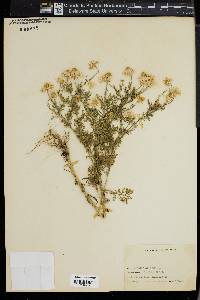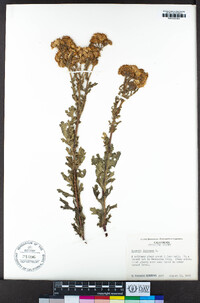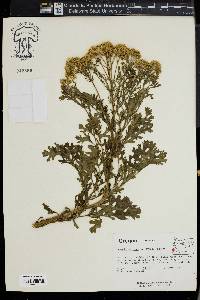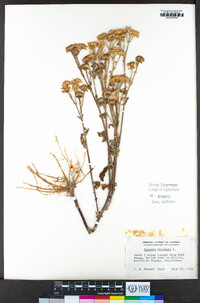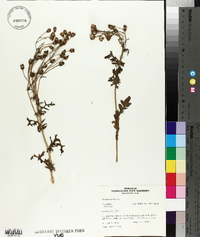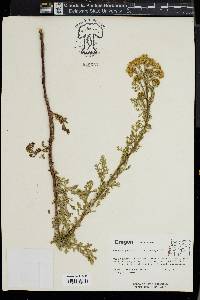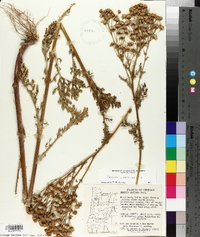Senecio jacobaea
|
|
|
|
Family: Asteraceae
|
Perennials, 20-80(-100) cm (taprooted or branched caudices surmounting taproots). Herbage sparsely and unevenly tomentose, glabrescent except in leaf axils and among heads. Stems (often purplish-tinged) usually single, sometimes loosely clustered. Leaves ± evenly distributed (basal often withering before flowering); petiolate (sometimes obscurely); blades ovate to broadly ovate (usually 1-3-pinnate, lobes mostly obovate to spatulate), (4-)7-20(-30) × (1-)2-5(-12) cm, bases usually tapered, ultimate margins dentate (distal leaves similar, smaller). Heads (10-)20-60+ in corymbiform arrays. Calyculi of 2-6 (inconspicuous) bractlets (less than 2 mm). Phyllaries ± 13, 3-4(-5) mm, tips black or greenish. Ray florets ± 13; corolla laminae 8-12 mm. Cypselae all sparsely hairy or ray cypselae glabrous. 2n = 40. Flowering spring-early summer(-fall). Disturbed sites, pastures, roadsides, and waste grounds; 0-1500 m; introduced; St. Pierre and Miquelon; B.C., N.B., Nfld. and Labr. (Nfld.), N.S., Ont., P.E.I., Que.; Calif., Idaho, Ill., Maine, Mass., Mich., Mont., N.J., N.Y., Oreg., Pa., Wash.; Europe. Senecio jacobaea is a weed introduced from Europe and now well established in places of cool, damp summers. It is toxic to livestock and legally noxious in most states and provinces where it occurs. The Russian botanist E. Wiebe (2000) resuscitated Jacobaea for plants that are treated here as Senecio jacobaea, S. erucifolius, and S. cannabifolius. Phylogenetic studies may confirm the utility of recognizing Jacobaea as a distinct genus; to do so here would be premature.
Biennial or short-lived perennial 2-10 dm, ±fibrous- rooted to evidently taprooted, simple to the infl, thinly floccose-tomentose at first, generally glabrous or nearly so by anthesis, except often in the infl; lvs equably distributed, mostly 2-3 times pinnatifid with ±pointed segments or teeth, 4-20 נ2-6 cm, the lower petiolate and often deciduous, sometimes less dissected than the others, the upper becoming sessile; heads ±numerous in a short broad infl; disk 7-10 mm wide; invol 4 mm, its bracts ca 13, over 1 mm wide, generally dark-tipped; rays 4-8 mm; achenes minutely hairy; 2n=40, 80. Native of Europe, now established as a weed in dry soil and waste places in parts of n. U.S. and adj. Can., in our range chiefly from N.J. to se. Can. July-Oct. Gleason, Henry A. & Cronquist, Arthur J. 1991. Manual of vascular plants of northeastern United States and adjacent Canada. lxxv + 910 pp. ©The New York Botanical Garden. All rights reserved. Used by permission. |

